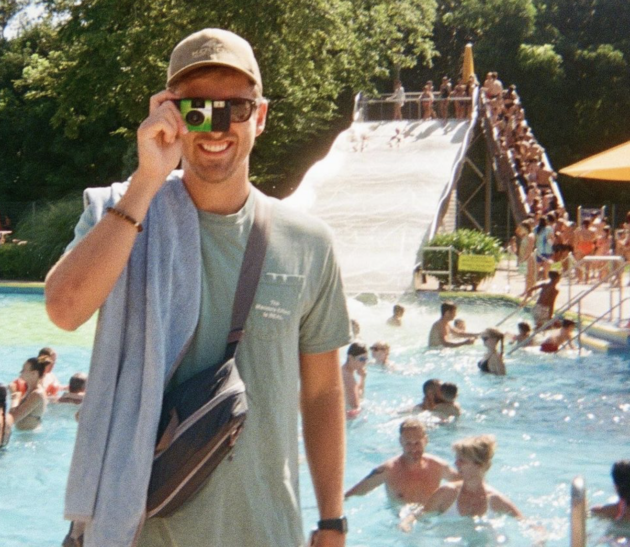Burned out on screens and social media, Seattle startup founder pictures a more tangible experience
Austin Hirsh is going through a bit of a nostalgia period. Like many people, the young tech entrepreneur is feeling burned out on screen time and social media, and is increasingly drawn to the tactile and analog, from vinyl records to film cameras.
A University of Washington graduate, Hirsh launched his first startup — The 2050 Company — right out of college. The company made powder for fruit smoothies from rescued produce, but after more than four years, Hirsh shut it down in October 2023.
“Running a startup is really, really hard,” Hirsh said. “You have to be asking yourself two questions: Is this the best fit for my unique skills and talents? And is this the problem that I am willing to dedicate 10-plus years of my life to?”
When the best he could answer was “maybe?” on both questions, he moved on. But he’s not sitting still.
Hirsh is now co-founder and CEO of Mems, a startup with a goal of combatting digital social media addiction by bringing networking and creativity into the physical world. His partner is Craig Sampson, a veteran designer, startup advisor and educator who was a longtime leader at the famed design firm IDEO.
Hirsh rejects the notion that simply adding a filter to a digital photo is a meaningful way to counteract tech boredom and burnout.
“I don’t think changing the media is enough,” he said. “You have to also change the medium.”
As a kid, his music was served up on streaming platforms, so listening to vinyl feels like a “crazy new experience,” Hirsh said. He discovered that taking infinite photos of a sunset on an iPhone becomes a more novel endeavor with only 27 frames to shoot on a disposable camera.
Mems’ first project plays into that thinking.

With a short Kickstarter launched earlier this month, Mems is selling “Mem-A-Ments,” a product that marries the tangible with the digital. Made to look like a vintage film slide, a Mem-A-Ment is a personalized Christmas ornament that can be snail mailed to a friend or family member and hung on a tree.
The physical Mem-A-Ment is embedded with near field communication technology, which means that when a smartphone taps the slide, it brings up additional, digital images. People with identical Mem-A-Ments can share images from different locations via a portal viewable on their phones.
Hirsh, whose family is in Gig Harbor, Wash., plans to use one device at home and send one to his sister, who is working in Bend, Ore., during Christmas.
A veteran of Kickstarter campaigns, Hirsh is trying a new approach in which he’ll run multiple, short campaigns limited to 100 donors who will receive their product quickly. That way, Kickstarter becomes Mems’ testing ground for monthly product experiments.
Hirsh has more ideas up his sleeve, and he can imagine people ordering his slides as a way to “store” vacation photos. Or maybe someone would order a slide, load it with images and send it to their mom for her birthday, so she can tap her phone on it and view the desired album.
“You could say, ‘Why can’t you text photos back and forth?'” Hirsh said. “But I think there’s really something really meaningful about having memories embedded in a physical thing. I think we lost something when we stopped having physical photos and photo albums.”
Hirsh has already been running a similar project around Seattle, creating spontaneous “photobooths” at popular Fremont neighborhood locations such as the Troll and the Rocket. Users are encouraged to tap upcycled film canisters that he’s placed at the sites, snap a selfie and follow directions for sharing to a community portal. He’s posted multiple videos on his TikTok promoting the photobooths.
The effort reminds Hirsh of the craze around the augmented reality game “Pokémon Go” a few years ago. He liked that you didn’t play alone on your couch, that you had to get out, go to a park, see friends and meet strangers in person.
“That was the most optimistic I felt about tech in a long time,” Hirsh said. “It turned the real world into the medium for the game, using technology as this tool to make you feel less online rather than more online. That’s the key.”

